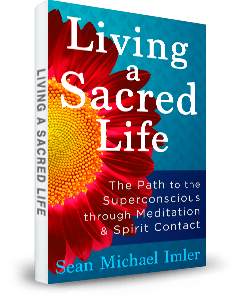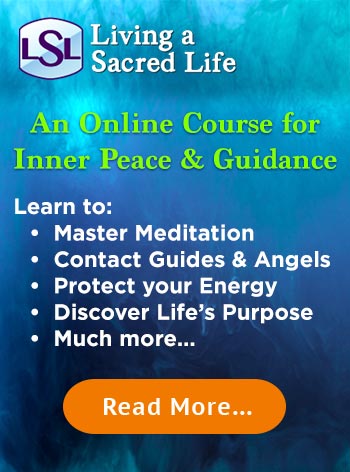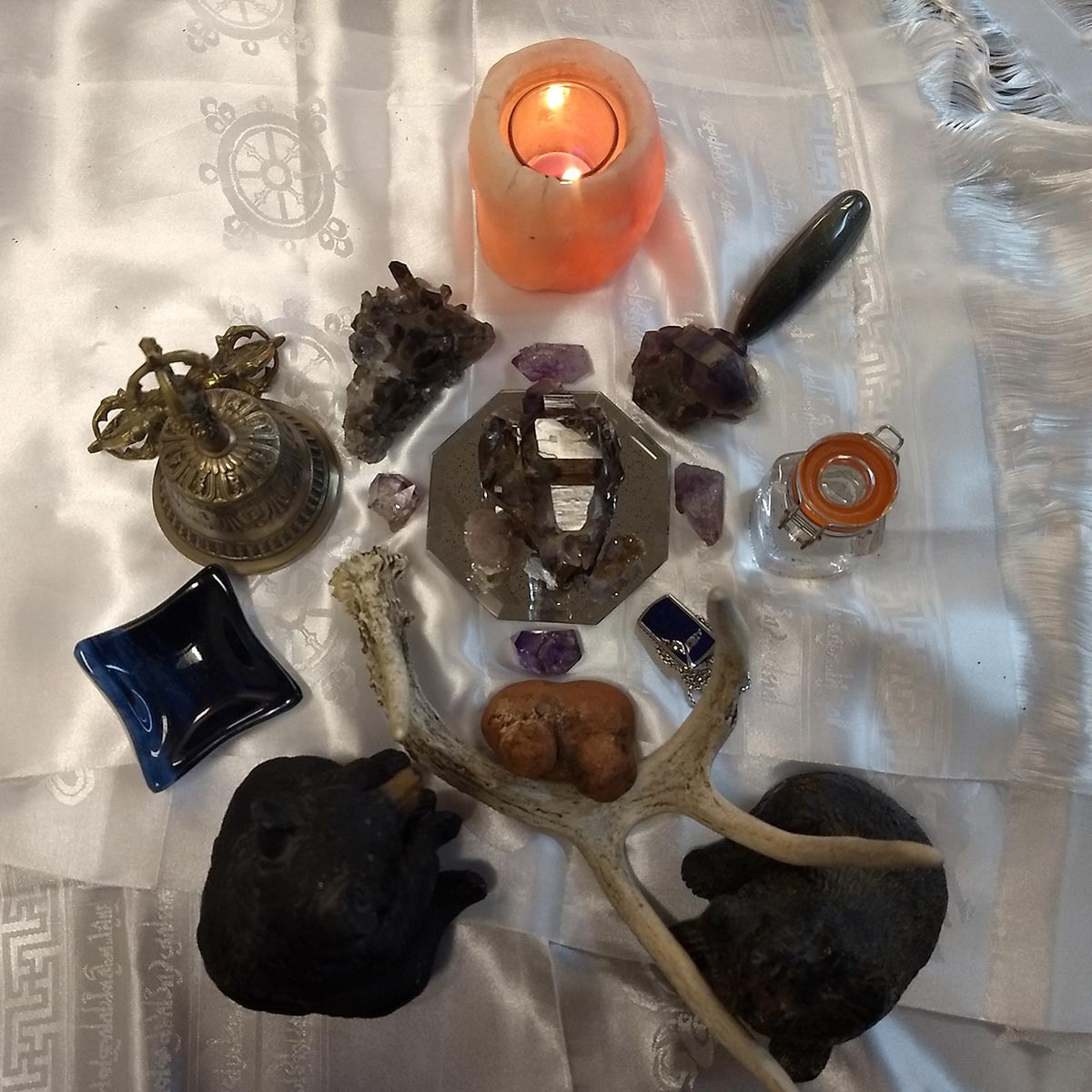As someone who has spent a considerable amount of time studying and practicing various forms of meditation, I can assure you that the journey to finding the right one can be as winding and complex as the practice itself. The landscape of meditation is vast, teeming with numerous techniques and approaches, each with its unique benefits and challenges.
Contents
The sheer abundance of meditation types can, at times, appear overwhelming, especially for beginners. Some methods require stillness and concentration, while others encourage movement and mindfulness. Some delve into the spiritual depths, while others keep to the surface focusing purely on relaxation and stress reduction.
It’s a lot to take in, and the question often arises: “Which one is right for me?”. It’s a critically important question, one that warrants careful consideration and exploration. After all, the effectiveness of meditation largely depends on whether it aligns with your goals, lifestyle, and personal comfort.
“The journey of meditation begins with a single step: choosing the path that resonates with you the most.”
As you navigate through these options, keep in mind that there’s no universally ‘best’ type of meditation. The ideal choice is deeply personal, contingent on your individual needs and intentions. This article will provide a comprehensive overview of popular meditation methods, their unique features, and what you can expect from practicing them, ultimately aiding you in making an informed decision.
Mindfulness Meditation: Focused Awareness for a Happier Life
Mindfulness meditation, a practice originating from Buddhist teachings, is perhaps the most popular form of meditation in the West. It encourages practitioners to remain aware and present in the moment rather than dwelling on the past or anticipating the future. The method involves focusing on your breath or an object while observing thoughts, emotions, and sensations that arise without judgment (a practice often referred to as “open monitoring”).
According to research, mindfulness meditation has over 20 million practitioners in the United States alone. Evidence suggests that mindfulness can improve mental health, enhance focus, and reduce stress and anxiety. The benefits often materialize gradually, so patience and consistency are key when embracing this path.
As the name suggests, mindfulness meditation involves cultivating mindfulness (i.e., the state of being fully aware and engaged with the present moment). It encourages us to let go of the past, refrain from anticipating the future, and immerse ourselves in the ‘here and now’. By doing so, we develop a heightened sense of awareness about our thoughts, emotions, and sensations, thereby facilitating a deeper connection with our inner self.
This form of meditation is practiced by millions worldwide. The 2017 National Health Interview Survey (NHIS) revealed that 14.2% of American adults had practiced mindfulness meditation in the previous year. This figure represents an almost four-fold increase from the 4.1% reported in 2012, demonstrating the rapidly growing interest in this practice.
The Mindfulness Technique
Mindfulness meditation is relatively straightforward to practice, often requiring only a quiet space, a comfortable posture, and an open mind. The technique involves the following steps:
- Choose a quiet and comfortable location free from distractions.
- Adopt a comfortable posture, whether it’s sitting, lying down, or even walking.
- Begin by taking a few deep breaths, allowing your mind and body to relax.
- Gradually bring your attention to the present moment, focusing on what you are experiencing right now.
- Observe your thoughts and feelings without judgment. If your mind wanders, simply acknowledge the distraction and gently bring your focus back to the present.
What to Expect
Engaging in mindfulness meditation regularly can yield numerous benefits. Researchers have found compelling evidence linking this practice to improved mental health, enhanced cognitive abilities, and better physical health. Some of the potential benefits include:
- Reduced stress and anxiety
- Improved concentration and memory
- Enhanced self-awareness and emotional intelligence
- Lower blood pressure and improved cardiovascular health
- Reduced symptoms of depression and anxiety disorders
Despite these potential benefits, it’s important to remember that meditation is not a quick fix for life’s challenges. Rather, it’s a long-term commitment that requires patience, practice, and perseverance. Also, remember that each individual’s experience with meditation is unique. Therefore, what works for one person may not work for another. The key is to approach the practice with an open mind and a willingness to explore your inner self.
Transcendental Meditation: The Technique of Success and Inner Peace
First, allow me to delve into the specifics of one of the most well-known and widely practiced forms of meditation: Transcendental Meditation (TM). This method, which was brought to the western world by Maharishi Mahesh Yogi in the mid-20th century, is typically associated with numerous celebrities and successful entrepreneurs who attest to its benefits (including the likes of Oprah Winfrey and Jerry Seinfeld).
TM is a simple, natural, effortless technique practiced 20 minutes twice each day while sitting comfortably with the eyes closed. The practice involves the use of a mantra (a word or sound repeated to aid concentration in meditation) which is given to the practitioner by a certified teacher. This mantra is silently repeated during the meditation to allow the mind to gradually settle and experience a unique state of restful alertness.
Many individuals are drawn to TM due to its relatively structured method and the promise of tangible benefits. The technique is said to promote a state of relaxed awareness where the mind can become calm and quiet, while the body attains deep rest. This is known as achieving ‘transcendental consciousness,’ a state of pure awareness.
“Transcendental Meditation doesn’t focus on breathing or chanting, like other forms of meditation. Instead, it encourages a restful state of mind beyond thinking… A 2009 study found that TM relieved stress in college students, while another found it lowered blood pressure, anxiety, depression and anger.”
~ Mayo Clinic
TM Requires Instruction
It’s worthwhile to mention that, unlike some other forms of meditation, TM requires a seven-step course of instruction from a certified teacher. This ensures that the technique is taught correctly and allows the practitioner to fully experience the benefits of the practice. There’s an initial cost involved, but proponents argue that the benefits far outweigh this investment.
Although exact numbers are hard to come by, it’s estimated that millions of people worldwide practice TM. These individuals come from all walks of life and represent a broad array of cultures, professions, and ages. TM’s widespread popularity is due in part to its universal appeal, ease of practice, and the backing of scientific research supporting its benefits.
In summary, if you’re seeking a meditation technique that’s structured, well-researched, and promises tangible benefits such as reduced stress and enhanced mental clarity, Transcendental Meditation might be the right path for you. Remember, the key to successful meditation practice is consistency and patience, regardless of which path you choose.
Zazen: Zen Meditation
Zen Meditation, also known as Zazen (which means “seated meditation” in Japanese), is at the heart of Zen Buddhism. During Zazen, practitioners sit in a specific posture, focusing on breath and mindfully observing thoughts and feelings without attachment. It’s a disciplined practice that requires proper guidance and commitment.
While it’s difficult to estimate the exact number of Zazen practitioners globally due to its integral role in Zen Buddhism, it’s widely practiced in Japan and has a growing following in the West. Zazen can pave the way to deep self-understanding and enlightenment. However, it demands discipline and dedication, making it more suitable for those willing to commit to a structured practice.
The Zazen Technique
The Zazen technique, also known as Zen meditation, is a deeply disciplined practice that originated from Buddhism. As the name ‘Zazen’ implies, which literally translates as “seated meditation”, this technique focuses heavily on sitting postures. However, despite its seeming simplicity, this form of meditation requires a lot of commitment and discipline.
As I have personally experienced, the Zazen technique requires maintaining a straight posture, often in a cross-legged position, and focusing on controlled breathing while allowing thoughts to pass by without engagement.
The following list outlines the steps involved in the Zazen technique:
- Find a quiet, peaceful space: This should be somewhere you can sit comfortably without disturbances.
- Choose your Zazen posture: There are several postures to choose from. These include the Burmese, half-lotus, and full-lotus positions. But don’t worry if you can’t manage these at first; sitting on a chair is also perfectly fine.
- Focus on your breath: Try to maintain a natural rhythm and focus your attention on the sensation of breathing.
- Let your thoughts pass: It’s natural to have thoughts arise during your meditation. The key is to let them come and go without judgment or attachment.
What to Expect from Zazen Meditation
It’s important to know that, like any meditation practice, Zazen is a journey, and the results won’t necessarily be instant. However, with regular practice, you’ll notice gradual changes in your mental state and overall well-being. Here are some things you can expect:
- A calmer mind: The more you practice Zazen, the more you’ll notice a decrease in mental chatter and an increase in peacefulness.
- Increased mindfulness: As you become better at focusing on your breath and letting go of thoughts, you may find you’re more present and mindful in your day-to-day life.
- Enhanced self-awareness: Zazen can deepen your connection with yourself and improve your understanding of your thoughts and feelings.
- Improved discipline and focus: The disciplined nature of Zazen can translate into better discipline and focus in other areas of your life.
Remember, everyone’s experience with Zazen is unique. The key is consistency and patience with yourself. As you get more comfortable with the practice, you’ll discover the ways in which it benefits you most.
Loving-Kindness Meditation: Cultivating Compassion and Connection
When it comes to meditation, one cannot overlook the profound practice of Loving-Kindness Meditation (also known as Metta Bhavana). This form of meditation has its roots in Buddhist traditions, where it is seen as a method to cultivate compassion and love for oneself and others. Millions of people around the globe practice this form of meditation, making it one of the most popular and widely followed methods. The primary goal of this practice is to promote feelings of compassion and love, both for oneself and for others, and to foster a sense of interconnectedness with all beings.
But how exactly does one embark on this journey of love and compassion? The practice is fairly straightforward, yet deeply enriching. To begin with, you start by focusing on yourself, cultivating feelings of love and kindness towards your own being. This is not a narcissistic indulgence, but rather a recognition of your own worth and the necessity of self-care (which many of us often overlook in the hustle and bustle of daily life).
“May I be happy. May I be well. May I be safe. May I be peaceful and at ease.”
~Traditional Metta Meditation Phrase
Once you’ve established a strong base of self-compassion, you gradually expand this outwards. You proceed to cultivate these feelings of love and kindness towards a loved one, then towards a neutral person, then towards a difficult person, and eventually, towards all sentient beings. Each stage deepens the practice and broadens your capacity to love and feel compassion, regardless of the circumstances.
What to Expect
The benefits of this meditation technique are manifold, but they all center around enhancing your emotional well-being. Through consistent practice, you can expect to experience a reduction in negative emotions such as anger, resentment, and frustration. On the flip side, you can look forward to an increase in positive emotions like joy, love, and gratitude. This can lead to improved relationships, better mental health, and a more fulfilling life overall.
I firmly believe that Loving-Kindness Meditation is an approachable and beneficial practice for anyone seeking to cultivate a deeper sense of connection and compassion in their life. The path may not always be easy, but the rewards it brings make every step worthwhile. If you’re looking to embolden your emotional capacities and enrich your relationships with others, I strongly urge you to give this form of meditation a try.
Body Scan Meditation: Relaxing Your Body and Mind
When the hustle and bustle of daily life begins to weigh heavily on us, Body Scan Meditation can serve as a calming refuge (a beacon of tranquility, if you will). As its name implies, this form of meditation involves mentally scanning your body from top to bottom, paying attention to any sensations, discomfort, or tension that you may encounter along the way.
The primary goal of Body Scan Meditation is to cultivate a heightened sense of body awareness. With consistent practice (ideally daily), you can expect a deepened connection between your body and mind, increased present-moment awareness, and improved stress management capabilities. Not bad for a technique that merely requires you to lie down and focus on your body, right?
The Body Scan Technique
- Find a comfortable position: This could be lying down on your back, sitting on a meditation cushion, or even reclining in a chair. The key is to find a position in which you can remain still and relaxed for the duration of the meditation.
- Begin at the top of your head: Close your eyes and start by focusing your attention on the top of your head. Notice any sensations that might be present—heat, cold, throbbing, tension, etc. Don’t judge or analyze these sensations; simply acknowledge them.
- Move downwards: Slowly shift your focus downwards, moving from your head to your neck, then your shoulders, arms, and so forth, all the way down to your feet. Again, take note of any sensations you encounter along the way.
- Observe and accept: As you scan your body, you may come across areas of tension or discomfort. Rather than trying to change or fix these, simply observe them. Accept them as they are. This practice of observation and acceptance is at the heart of Body Scan Meditation.
- Take your time: A thorough body scan can take anywhere from 20 to 45 minutes. Don’t rush the process. The longer you can maintain your focus, the deeper your relaxation and awareness will be.
Bringing Up Your Stuff
While Body Scan Meditation is generally considered safe for most individuals, it’s worth noting that it can sometimes bring up intense emotions or memories, particularly in those with a history of trauma or chronic pain. If you find yourself feeling overwhelmed during a body scan, it’s perfectly okay to stop and seek support from a mental health professional.
As for how many people practice Body Scan Meditation, firm numbers are hard to come by. However, it’s safe to say that this technique is widely embraced by the mindfulness community and is often taught in stress reduction courses and mindfulness-based therapies. Some practitioners even incorporate it into their yoga or relaxation routines.
Body Scan Meditation, with its emphasis on deep relaxation and body-mind connection, could be the right meditation path for you if you’re seeking a simple, stress-reducing technique that requires nothing more than your attention and an open mind. Give it a try. You might discover a new level of bodily awareness and inner peace that you never knew existed.
Movement Meditation: Finding Stillness Through Motion
Rooted in the belief that motion can aid in achieving a meditative state, this form of meditation is ideal for those of us who find stillness difficult, or simply enjoy incorporating movement into our mindfulness practices.
Movement meditation takes many forms, including, but not limited to, walking meditation, yoga, tai chi, and dance. What these practices all have in common is the concept of mindful movement. Rather than trying to quieten the mind by focusing on a single point of concentration, movement meditation encourages practitioners to attune to their physical sensations as an anchor for their awareness. It’s about fully inhabiting your body and experiencing the world through your senses, rather than getting lost in thought.
Walking Meditation
Walking meditation is one of the most popular forms of movement meditation, and it’s easy to see why. It’s simple, accessible, and can be done anywhere. The basic method involves walking slowly, paying close attention to the sensation of your feet touching the ground, the movement of your muscles, and the rhythm of your breath. It’s estimated that millions of people worldwide practice walking meditation—bringing mindfulness into their everyday routines.
Yoga
Yoga originated in ancient India and has become a worldwide phenomenon, with an estimated 36 million people practicing in the U.S. alone. While yoga is often associated with physical fitness, it’s also a profound spiritual practice that combines breath control, simple meditation, and the adoption of specific bodily postures. The goal is to connect the mind, body, and spirit, creating a sense of inner peace and self-awareness.
Tai Chi
Tai Chi, a martial art known for its health benefits and meditative qualities, has a strong following, particularly among older adults. It involves performing a series of movements in a slow, focused manner, accompanied by deep breathing. With over 250 million practitioners globally, Tai Chi is known to improve balance, increase flexibility, and reduce stress.
Dance
For those who find joy in music and rhythm, dance can be a powerful form of movement meditation. It’s less about structured movements or choreography, and more about moving in a way that feels right for you. Whether practiced in a group setting or alone, dance meditation can help release pent-up emotions, reduce anxiety, and connect you with your body in a joyous, expressive way.
Meditation on Chakras: Balancing Your Energy Centers
As we delve into the realm of chakra meditation, it’s vital to recognize that this practice revolves around the concept of energy centers within our body (known as chakras). Each chakra is believed to influence specific physical, emotional, and psychological aspects of our being. The goal of chakra meditation is to balance these energy centers, encouraging a state of well-being and harmony.
Chakra meditation is a well-accepted practice, with millions around the globe finding solace in this ancient tradition. It’s an intricate process that involves visualization, focus, and intention, requiring a certain level of commitment and patience. But don’t let this discourage you. Once you’ve mastered the basics, the rewards can be profound.
The Process of Chakra Meditation
The process of chakra meditation involves focusing on each chakra in turn, starting from the root (at the base of the spine) and moving up to the crown (at the top of the head). This journey through the chakras can be likened to a spiritual awakening, enabling the practitioner to experience heightened awareness and personal growth.
As you meditate, you’re expected to visualize each chakra as a spinning wheel of energy. Imagine its associated color glowing brightly, indicating a healthy and balanced state. As you move up the chakras, you may encounter those that don’t shine as brightly – a sign that there might be an imbalance or blockage. Through visualization and intention, you can restore these energy centers to their optimal state.
What to Expect from Chakra Meditation
Chakra meditation can be a transformative experience, fostering a sense of inner peace and balance. Practitioners often report feelings of increased energy, improved focus, and a greater sense of connection with themselves and the world around them. However, keep in mind that these outcomes are subjective and can vary significantly from person to person.
Moreover, the results from chakra meditation do not usually manifest immediately. It’s a gradual process that unfolds over time. The more consistently you practice, the more palpable the benefits become. Patience, as they say, is a virtue.
Mantra Meditation: Repeating Sacred Sounds for Spiritual Growth
Of the many paths one can take on their journey to self-discovery and enlightenment, Mantra Meditation, often known as Japa Meditation, is one particularly intriguing and powerful choice. It’s a time-tested practice that’s been used by spiritual seekers for thousands of years, particularly within the Hindu and Buddhist traditions. It involves the repetitive recitation of a mantra (a sacred sound, word, or phrase) as a means of quieting the mind and attuning oneself to higher states of consciousness.
But why choose Mantra Meditation among the plethora of other options? Simply put, the power of sound — and more importantly, the vibrational energy that sound carries — is immense. The ancients knew this, and so they crafted specific mantras (often derived from ancient Sanskrit) that, when chanted or recited with mindful intention, can have a transformative effect on the practitioner. The ability of mantras to focus the mind and elevate one’s energy is, in my experience, unparalleled.
The Mantra Technique
Traditional Mantra Meditation typically involves the following steps:
- Choosing a mantra that resonates with you: This could be a traditional Sanskrit mantra like ‘Om’, a phrase from a spiritual text, or even a word or phrase that holds personal significance for you. Remember, the power of a mantra comes not only from the sound itself but also from the intention and belief behind it.
- Sitting comfortably: As with most meditative practices, being comfortable is key. You should be able to maintain your posture without any strain. This could involve sitting on a cushion, a chair, or even lying down if necessary.
- Beginning the recitation: Close your eyes and start to repeat your mantra either aloud or silently within your mind. The volume does not matter as much as the rhythmic, constant repetition.
- Maintaining focus: When you notice your mind wandering (as it inevitably will), simply bring your attention back to your mantra without judgment.
Consistency is key in Mantra Meditation. The more frequently and regularly you practice, the more you will be able to harness the power of your chosen mantra.
So what can you expect from Mantra Meditation? As with all forms of meditation, the benefits are numerous and often extend beyond the spiritual realm. Regular practitioners often report improved concentration, reduced anxiety, enhanced self-awareness, and even a greater sense of peace and wellbeing. The vibrational energy of the mantra can also have a purifying effect on your subtle body, aligning your chakras (energy centers) and balancing your Prana (life force energy).
As for the number of people who practice Mantra Meditation, it’s hard to pin down an exact figure. However, given its prominence within major spiritual traditions like Hinduism and Buddhism, which together account for over a billion followers worldwide, it’s safe to say that Mantra Meditation has been, and continues to be, a vital part of countless spiritual journeys.
Vipassana Meditation: The Practice of Self-Discovery
Having journeyed through the realm of meditative practices for several years, I’ve found Vipassana meditation to be a profound method of self-discovery. This centuries-old Buddhist practice, which translates to “seeing things as they really are”, offers practitioners an intimate exploration of their own mind and experiences, often leading to incredible insights and self-realization.
The method of Vipassana involves a disciplined focus on the breath, on the sensation of inhaling and exhaling, and the subsequent arising and passing away of sensations within the body. This, coupled with a non-judgmental observation of thoughts and emotions (as they present themselves), cultivates a deep sense of mindfulness and allows practitioners to witness the transitory nature of reality – a key concept in Buddhist philosophy.
While the concept may sound simple, the practice can be quite challenging, especially for beginners. It requires dedication, perseverance, and most importantly, a willingness to confront unpleasant emotions and experiences that may arise during the practice. However, the benefits reaped from this form of meditation are immeasurable. Vipassana has been associated with reduced stress, improved mental clarity, and increased emotional intelligence and self-awareness (to name a few).
“The greatest discoveries are those that shed light into our own selves.”
It is estimated that millions of people around the world practice Vipassana, either through attending 10-day intensive Vipassana retreats (a common initiation into the practice), or incorporating it into their daily routines. This form of meditation is particularly popular in Southeast Asia, where it originated, but its recognition and influence have been spreading globally.
As a practitioner of Vipassana, you can expect a journey of self-discovery and transformation that is, at times, challenging, but ultimately rewarding. It has the potential to alter your perception of yourself and the world around you, encouraging a more compassionate and understanding approach to life’s trials and tribulations.
What to Expect When Practicing Vipassana
When embarking on the journey of Vipassana, there are certain experiences and sensations that one can anticipate. Initially, you may find your mind wandering (a common occurrence in meditation), but with persistent practice, you’ll learn to gently bring your focus back to the breath and the sensations in your body. There can also be moments of discomfort or restlessness, but these are simply part of the meditative process and are to be observed, not resisted. The aim is to cultivate equanimity – a state of mental calmness and balance in the face of life’s ups and downs.
As you progress in your practice, you may begin to notice subtle changes in your day-to-day life: a heightened sense of awareness, increased mental clarity and focus, and an overall sense of peace and well-being. These are the fruits of your labor, the rewards of your commitment and dedication to this meditative path.
Yoga Meditation: Combining Movement and Mindfulness
In my years of studying and teaching various forms of meditation, one type that has consistently stood out is Yoga Meditation. As the name implies, Yoga Meditation combines the physical exercises of Yoga (known as asanas) with the mental concentration and mindfulness techniques of meditation. It’s a holistic approach, aimed at harmonizing the body, mind, and spirit.
The beauty of Yoga Meditation lies in its flexibility (both literal and metaphorical). There are countless variations and methods, each designed to cater to different preferences, physical capabilities, and spiritual objectives. Consequently, this form of meditation has gathered an extensive following worldwide. According to a survey conducted by Yoga Journal and Yoga Alliance, more than 36 million people in the U.S. alone practice yoga, and a substantial number of these individuals incorporate meditation into their routines.
Yet, what does Yoga Meditation entail, and what can one expect from it? Let’s delve deeper.
Understanding the Method
Typically, a Yoga Meditation session begins with physical postures (asanas). The purpose of these exercises is twofold: to prepare the body for meditation by releasing tension and enhancing flexibility, and to cultivate a state of mindfulness through the focused attention required to perform each pose.
Following the asanas, practitioners transition into meditation. This can involve various techniques, depending on the specific style or tradition of Yoga Meditation being followed. Some common methods include focusing on the breath (pranayama), visualizing a specific image or concept (dharana), or simply observing one’s thoughts without judgement (dhyana).
Experiencing the Benefits
The results of Yoga Meditation can be profound. The combination of physical exercise and mental discipline promotes a wide range of benefits. Physically, it can improve flexibility, strength, balance, and overall fitness. Mentally, it helps to reduce stress, enhance focus, and promote a sense of inner peace and wellbeing.
Moreover, scientific studies have validated these claims. Research has shown that Yoga Meditation can alleviate symptoms of anxiety, depression, and chronic pain. It can also help to control blood pressure, boost the immune system, and improve sleep quality.
However, it is important to remember that these benefits aren’t instantaneous—they require consistent practice over time. Like any form of exercise or discipline, the more you put into it, the more you get out of it.
Finding Your Path
With so many variations of Yoga Meditation out there, finding the right method for you can seem daunting. But don’t be discouraged. The vast diversity of this practice means that there’s something for everyone—you just need to find what resonates with you.
Start by considering what you want to achieve: Are you looking for physical fitness, stress relief, spiritual growth, or a combination of these? Then, explore different styles and techniques—try a class, read a book, or research online. Experiment with different methods until you find one that feels right. Remember, meditation is a highly personal journey, and the best path is the one that suits you.
Guided Meditation: Letting Experts Lead You to Inner Calm
As someone who has experienced the profound benefits of meditation, I firmly believe that everyone can profit from this practice. However, the path to inner calm can be daunting for beginners. That’s where guided meditation comes in: it’s a form of meditation where an expert guides you through the process.
Those who are new to meditation often find themselves overwhelmed by the silence and solitude (which can ironically lead to a flurry of distracting thoughts). Guided meditation, with its structured and directed approach, can provide a helpful framework for novices. Experts provide step-by-step instructions, either live or through recordings, guiding you through the meditation process and ensuring that you don’t lose focus.
Guided Meditation Forms
Guided meditation can take several forms, but here are a few that are particularly popular:
- Body scan meditation: This involves a focus on different parts of the body, often starting from the toes and working up to the head. The guide will instruct you to note any sensations (pain, tension, warmth, etc.) without judgment or reaction.
- Loving-kindness meditation: This form of meditation cultivates feelings of compassion and love, both for oneself and others. The guide often asks you to visualize someone you care about and to send them positive wishes.
- Mindfulness meditation: This practice involves focusing on the present moment. The guide might ask you to pay attention to your breath, sensations in your body, or sounds in your environment.
According to a 2017 National Health Interview Survey, about 14.2% of American adults have tried guided meditation at least once. That’s roughly 35 million people reaping the benefits of letting experts lead them to inner calm.
When embarking on a guided meditation journey, you can expect to explore different aspects of your inner self. The guidance encourages you to stay present, focus, and develop an attuned awareness of your body and mind. Moreover, you’ll likely experience a variety of emotions and thoughts; it’s part of the process. The guide’s voice serves as a gentle reminder to return to your focal point, be it your breath, a mantra, or a body part.
If guided meditation really speaks to you, visit my Youtube Channel of the Evening of Shamanic Sound Healing for advanced guided journeys for healing.
Meditation Technology: The Digital Path to Inner Peace
When it comes to meditation, sometimes the conventional methods may not suit everyone. Maybe you’re someone who struggles with creating mental imagery or perhaps you find it challenging to focus in silence. Fear not, as in this digital age, technology has made its way into the realm of meditation, offering varying paths to tranquility and self-exploration.
Various apps, digital platforms, and devices now exist for those seeking a technologically aided meditation experience. These tools are designed to make meditation accessible, engaging, and effective in your daily routine.
- Guided Meditation Apps: Apps like Headspace, Calm, and Insight Timer offer a wide range of guided meditations. These guides can be tailored to your needs, whether you’re a beginner or an experienced meditator.
- Meditation Music Platforms: Platforms such as Spotify and my Youtube Channel of NeuralAmbience provide a plethora of calming music and soundscapes. These audio tracks can help you achieve a deep state of relaxation.
- Wearable Meditation Devices: Wearable devices like the Muse headband provide real-time feedback on your meditation, enabling you to understand and improve your meditation practice.
What to Expect
Let’s delve deeper into the world of meditation technology and explore what you can expect from each of these tools.
| Type of Technology | Method | What to Expect |
|---|---|---|
| Guided Meditation Apps | Guided audio meditations. Some apps also offer visual aids, mindfulness reminders, and progress tracking. | Increased accessibility to a variety of meditation techniques. Personalizable meditation schedules. Can be used anywhere. |
| Meditation Music Platforms | Audio tracks featuring calming music, nature sounds, or binaural beats to aid in meditation. | A more immersive and sensory meditation experience. Can help set the mood and promote relaxation. |
| Wearable Meditation Devices | Devices that track brain activity to provide real-time feedback on the quality and depth of meditation. | Helps you understand and improve your meditation techniques. Offers a scientific approach to meditation. |
Remember, there’s no one ‘right’ way to meditate. What matters most is what works for you and resonates with your spirit. Meditation is an individual journey of self-discovery and peaceful introspection.
In Conclusion
Ultimately, the right form of meditation is the one that resonates with you and aligns with your personal goals. If you’re interested in guided meditation, I encourage you to explore different styles and guides to find what works best for you. Remember, the journey to inner calm is a personal one, and guided meditation can be an excellent tool to help you navigate your path.
If you would like to explore a course in meditation, I recommend “Essential Meditation.”
If you would like a super simple starting point, read this article, “How to Meditate – 3 Things You Must Know.”











